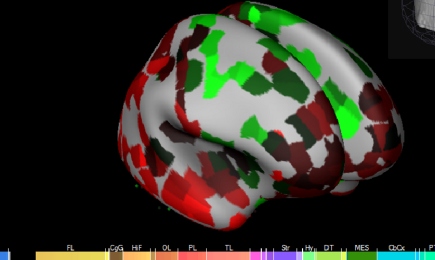Brain data plus mining tools

The Allen Human Brain Atlas opens new avenues for advancing research programs across disciplines that share an interest in the human brain—from neuroscience research programs based on functional MRI (fMRI) or neuropharmacology, for example, to comparative evolutionary studies and human genetics.
First there was a mouse
Earlier the Allen Institute for Brain Science developed the ‘Allen Mouse Brain Atlas’, a genome-wide, high-resolution atlas of gene expression throughout the adult mouse brain, combined with the infrastructure to handle high-throughput ISH, microscopy, and data processing.
This expertise enabled the Allen Institute to tackle high-throughput processing of human tissue and to systematically create an atlas of spatially mapped gene expression in the human brain.
The Allen Human Brain Atlas includes genome-wide microarray data for approximately 500 discrete anatomic regions per hemisphere of the adult human brain, along with ISH data covering select genes in specific brain regions and complementary anatomic data. With more than 100 million microarray expression data points from three brains and over 46,000 ISH images to date, the depth and breadth of data transcend the resources available to traditional laboratories, allowing scientists to easily explore beyond the streetlamp and into the shadows.
84% of all genes expressed in the brain
Data from the Allen Human Brain Atlas have revealed that 84% of all genes in the human genome are expressed somewhere in the brain, and the Atlas catalogs each of these genes with a quantitative fingerprint mapping their expression location(s).
Two recent studies used data in the Allen Human Brain Atlas to examine genes implicated in Alzheimer’s disease and autism spectrum disorders by modeling gene interactions and analyzing gene networks.
A full description of the possibilities of the Allen Brain Atlas can be found in the open source repository PlosBiology.
Meest Gelezen
Wederom intimidatie van journalisten door universiteit, nu in Delft
‘Burgerschapsonderwijs moet ook verplicht worden in hbo en wo’
Raad van State: laat taaltoets nog niet gelden voor hbo-opleidingen
Vrouwen houden universiteit draaiende, maar krijgen daarvoor geen waardering
Extra geld voor bètafaculteiten is daar nooit terechtgekomen

